|
|
Post by intrepid37 on Feb 8, 2024 16:09:34 GMT
The studio paired with him Rosalind Russell multiple times...the most successful venture was NIGHT MUST FALL, which netted Montgomery his first Oscar nomination as best actor:
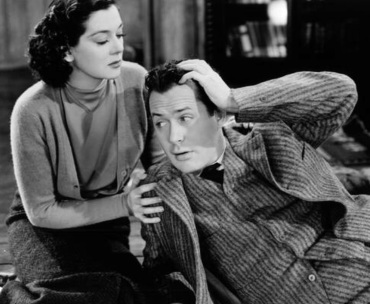
I've only recently fallen in love with her.
I realized her beauty while watching The Trouble with Angels and Where Angels Go Trouble Follows, and took Night Must Fall out of the library to copy to my collection. I'll be picking up His Girl Friday tomorrow when I make another library run. |
|
|
|
Post by christine on Feb 8, 2024 20:00:30 GMT
I think he was a major talent in THE GOLDEN DAYS OF HOLLYWOOD. He had a uniqueness about him. My favorite film of his is NIGHT MUST FALL. I feel like Rosalind Russell - you're drawn to him but know he's scary!
|
|
|
|
Post by topbilled on Feb 8, 2024 20:04:01 GMT
I think he was a major talent in THE GOLDEN DAYS OF HOLLYWOOD. He had a uniqueness about him. My favorite film of his is NIGHT MUST FALL. I feel like Rosalind Russell - you're drawn to him but know he's scary! |
|
|
|
Post by christine on Feb 9, 2024 0:25:08 GMT
I don't think I've seen RAGE IN HEAVEN - another added to my list of movies to see.
|
|
|
|
Post by gerald424 on Feb 9, 2024 2:23:09 GMT
Day 8. Robert Montgomery. From 1929 to 1947, he appeared in 50 motion pictures at MGM. During four of those years, he was off driving an ambulance during WWII...so he really made 50 films for Metro in a fourteen year period, plus he had some loan outs to other studios. This will give you a sense of how busy and how popular he was during those days.
At MGM he was put in big budget flicks and modestly budgeted programmers, alongside the studio's most important leading ladies. One of his most frequent leading ladies was Norma Shearer, seen here in a shot from RIPTIDE:
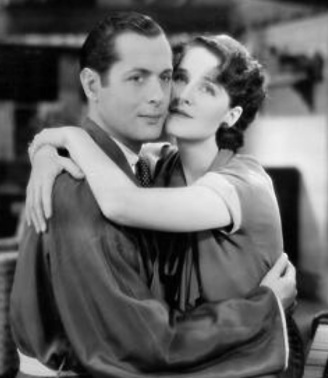
He was also paired with Ann Harding twice (on loan from RKO)...in the original version of WHEN LADIES MEET and THE BIOGRAPHY OF A BACHELOR GIRL:

Another leading lady he worked with more than once was Joan Crawford. They had a huge hit with the first remake of THE LAST OF MRS. CHEYNEY in 1937.
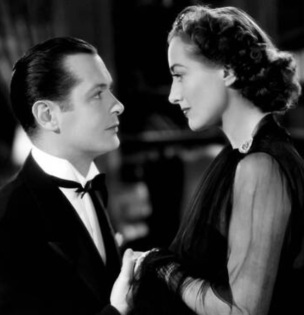
Around the same time he made PETTICOAT FEVER with Myrna Loy:
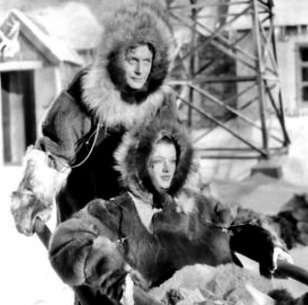
The studio paired with him Rosalind Russell multiple times...the most successful venture was NIGHT MUST FALL, which netted Montgomery his first Oscar nomination as best actor:

There would be another Oscar nomination for HERE COMES MR. JORDAN, on loan to Columbia:
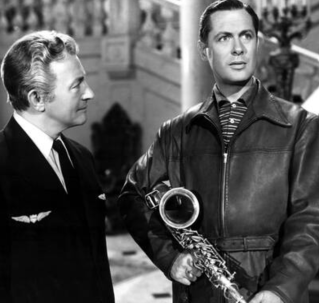
A year earlier he made THE EARL OF CHICAGO, which was daughter Elizabeth's favorite of all his films. He definitely had fun making this cheeky gangster comedy:
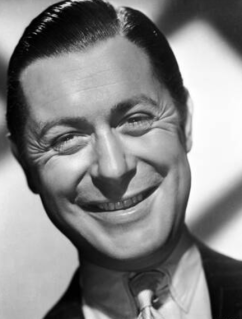
Towards the end of the war, he returned to MGM to appear alongside John Wayne and Donna Reed in John Ford's patriotic drama THEY WERE EXPENDABLE:

He began to branch out into directing, but most of those assignments were at other studios in the late 1940s. His most critically lauded effort in this vein was Universal's noir RIDE A PINK HORSE, in which he directed himself along with Thomas Gomez:

There was also another noir, THE SAXON CHARM, in which he played a ruthless theatrical producer. In that picture, he costarred with Audrey Totter, Susan Hayward & John Payne:
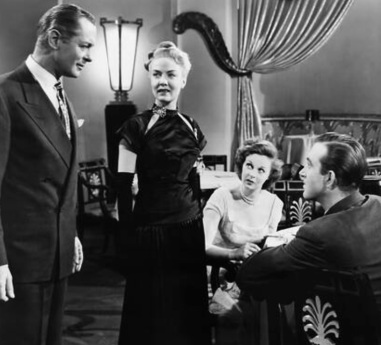
After leaving MGM, he continued to freelance at other studios, acting and directing. His last motion picture as an actor was the British legal drama YOUR WITNESS in 1950. He then transitioned to television production, where he hosted his own anthology series Robert Montgomery Presents from 1950 to 1957. Over 300 episodes were produced of the series.
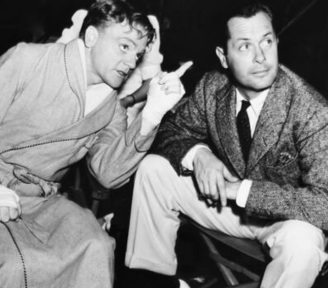
There would be a later film as director, THE GALLANT HOURS (1960) with James Cagney. He had also been branching out into producing Broadway plays. He had backed the original stage production of The Desperate Hours, selling the rights to Paramount for the story to be adapted into a film. But from 1960 on, he largely retired from show biz.
|
|
|
|
Post by topbilled on Feb 9, 2024 2:44:30 GMT
Day 8. Robert Montgomery. From 1929 to 1947, he appeared in 50 motion pictures at MGM. During four of those years, he was off driving an ambulance during WWII...so he really made 50 films for Metro in a fourteen year period, plus he had some loan outs to other studios. This will give you a sense of how busy and how popular he was during those days.
At MGM he was put in big budget flicks and modestly budgeted programmers, alongside the studio's most important leading ladies. One of his most frequent leading ladies was Norma Shearer, seen here in a shot from RIPTIDE:

He was also paired with Ann Harding twice (on loan from RKO)...in the original version of WHEN LADIES MEET and THE BIOGRAPHY OF A BACHELOR GIRL:

Another leading lady he worked with more than once was Joan Crawford. They had a huge hit with the first remake of THE LAST OF MRS. CHEYNEY in 1937.

Around the same time he made PETTICOAT FEVER with Myrna Loy:

The studio paired with him Rosalind Russell multiple times...the most successful venture was NIGHT MUST FALL, which netted Montgomery his first Oscar nomination as best actor:

There would be another Oscar nomination for HERE COMES MR. JORDAN, on loan to Columbia:

A year earlier he made THE EARL OF CHICAGO, which was daughter Elizabeth's favorite of all his films. He definitely had fun making this cheeky gangster comedy:

Towards the end of the war, he returned to MGM to appear alongside John Wayne and Donna Reed in John Ford's patriotic drama THEY WERE EXPENDABLE:

He began to branch out into directing, but most of those assignments were at other studios in the late 1940s. His most critically lauded effort in this vein was Universal's noir RIDE A PINK HORSE, in which he directed himself along with Thomas Gomez:

There was also another noir, THE SAXON CHARM, in which he played a ruthless theatrical producer. In that picture, he costarred with Audrey Totter, Susan Hayward & John Payne:

After leaving MGM, he continued to freelance at other studios, acting and directing. His last motion picture as an actor was the British legal drama YOUR WITNESS in 1950. He then transitioned to television production, where he hosted his own anthology series Robert Montgomery Presents from 1950 to 1957. Over 300 episodes were produced of the series.

There would be a later film as director, THE GALLANT HOURS (1960) with James Cagney. He had also been branching out into producing Broadway plays. He had backed the original stage production of The Desperate Hours, selling the rights to Paramount for the story to be adapted into a film. But from 1960 on, he largely retired from show biz.
After I have the clarity I want in terms of sharpness and filtering, then I will crop them so I can put them into a similar size. Also I crop them to remove any extra imperfections on the left and right, and on the top and bottom. For example, some of these old publicity photos have the dates hand written on the bottom, and I always crop off the date. Or if it's a photo where a star has autographed it, I will crop off the signature.
Once I have the photos cropped, I decide if I want to retouch them in places...usually I feel the handkerchiefs hanging out of the mens suit coat pockets look silly, so I often remove the handkerchiefs, by coloring over them (retouching). If someone has wrinkles or freckles or pimples on their face, forehead or neck I may color over those blemishes, so the skin looks better.
Okay, after I have retouched them to my liking, then I am ready to put them on to my blog. I always upload them on to the blog, because the blog allows greater resizing. So if I don't have the sizing just right on the Photos app, I can fix/adjust the sizing on my blog. Also, on the Photos app, I can only work on one image at a time. But when I transfer them over to a page on my blog, I can manipulate the images one above the other and it is must easier to size them consistently.
After they are sized exactly how I want them on the blog, I update/save that page on the blog. Then I can copy the URLs for the images from my blog page and insert them here.
LOL now that I reflect on this...it's a lot of work. But I've done this so often, I've gotten quite fast at it. If a photo just isn't cooperating, like I cannot get the imperfections removed on the Photos app, and the size still doesn't look right on the blog, then I delete it, go find a better image and start over. But as I said, I have gotten fairly quick at doing this and it's fun!
The one benefit to putting them on my blog is they save in an images library on my blog. So I can always re-use them after all the hard work of getting the images just the way I want them. |
|
|
|
Post by topbilled on Feb 9, 2024 14:58:39 GMT
Day 9. Deanna Durbin. Very seldom in the golden age of Hollywood did an actress make all her feature films at one studio. Vera Ralston's entire motion picture career took place at Republic, and aside from a short film at MGM, all of Deanna Durbin's films were made at Universal. Like Ralston, Durbin chose to retire at a young age, basically going out on top. However, in Deanna Durbin's case, as she admitted in an interview years later, her last few films were not too good and her popularity at the box office was starting to wane.
Her first film at Universal, THREE SMART GIRLS in 1936, was a huge moneymaker. It catapulted her to fame. She was cast opposite Ray Milland (on loan from Paramount).
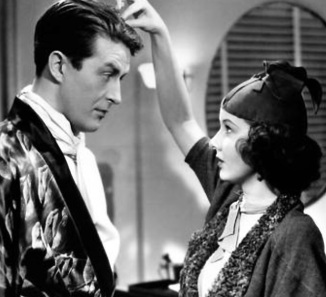
The next few pictures perfected the formula, usually with her playing musical prodigy falling for handsome men. Most of her male costars were of a certain age. She appeared with Jackie Cooper in THAT CERTAIN AGE (1938).
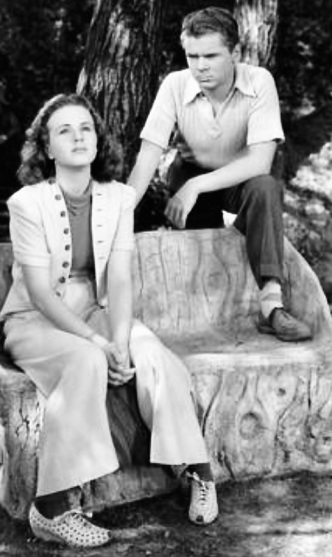
Robert Cummings was the love interest in the sequel to THREE SMART GIRLS, called THREE SMART GIRLS GROW UP (1939). It would be the first of three pictures that teamed Durbin and Cummings. Their third collaboration was one of Durbin's best-- IT STARTED WITH EVE (1941).
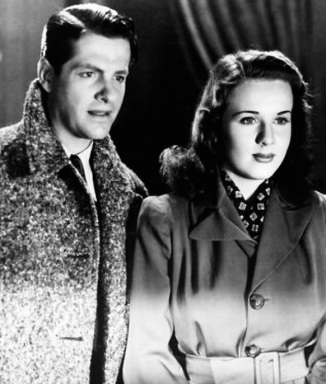
IT'S A DATE was later remade by Metro with Jane Powell and called NANCY GOES TO RIO. In IT'S A DATE, she crushes on a much older man played by Walter Pidgeon, who eventually ends up with her mother (Kay Francis).
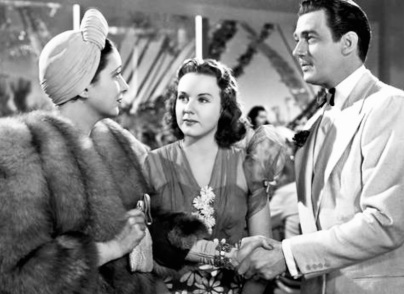
NICE GIRL? (1941) was the first of three with Franchot Tone.
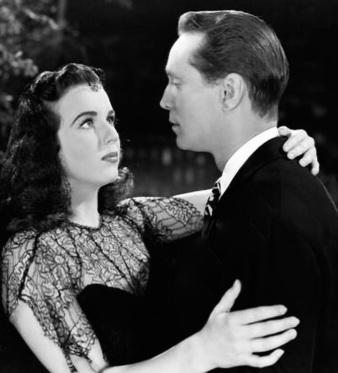
There were no Deanna Durbin films in 1942. She next appeared as THE AMAZING MRS. HOLLIDAY (1943) but this picture underperformed, the first one of her films that was not a runaway hit. The leading man was Edmond O'Brien who would also be her leading man in her last film five years later.
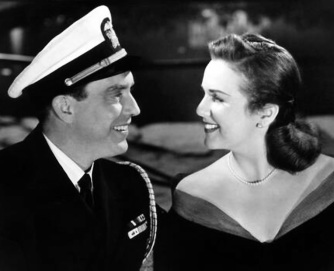
Perhaps tiring of the syrupy formula the studio had devised for her, she chose to stretch her acting muscles alongside Gene Kelly in the noir CHRISTMAS HOLIDAY (1944). This a great film that is hard to find, but if you come across it, take the time to watch as both stars put their musical talents aside to turn in excellent dramatic performances.
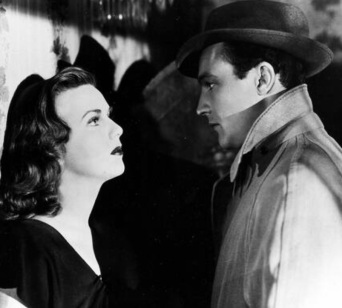
She was back to the regular formula in CAN'T HELP SINGING (1944). But this picture had a larger budget than most, it placed her in a western setting, and it was filmed in Technicolor. This is the only Durbin film in color. It's beautifully made, and she looks wonderful opposite Robert Paige.
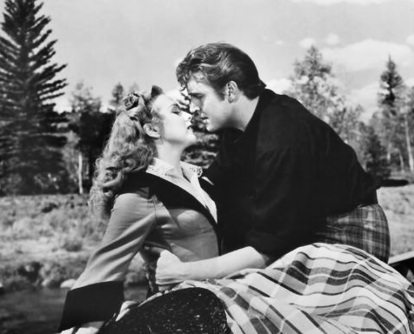
LADY ON A TRAIN (1945) came next...sort of a cross between noir, holiday comedy and musical. Not all the elements mesh but she does a nice job. She's a blonde and teamed with David Bruce, who was not the strongest leading man of her generation. It's too bad Universal didn't borrow Gene Kelly again from MGM.
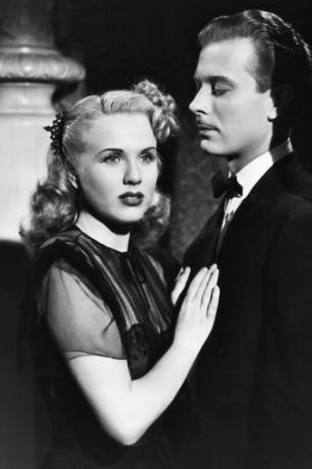
I'LL BE YOURS (1947) did feature an MGM contractee-- nice guy Tom Drake working alongside Durbin. It was a modest success at the box office, but from this point forward, scripts were flimsier and her career was in gradual decline.

SOMETHING IN THE WIND (1947) put her on screen with John Dall and Donald O'Connor. O'Connor had just returned from the war, so most of the publicity focused on it being his comeback.
UP IN CENTRAL PARK (1948) was a period picture, a musical comedy with Dick Haymes who was borrowed from 20th Century Fox. It had Vincent Price in a supporting role. This was her penultimate picture.
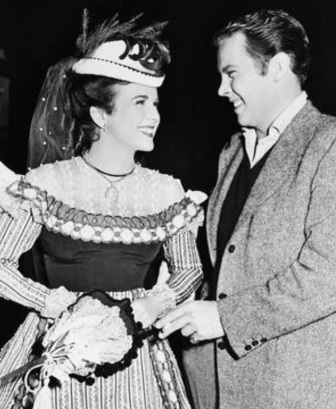
FOR THE LOVE OF MARY (1948) was the final Durbin film...a rather lackluster romcom that Durbin herself didn't think very highly of...she thought her last best film was BECAUSE OF HIM, a 1946 offering with Charles Laughton.
Durbin became a recluse and moved to Europe after leaving Hollywood. She seldom granted interviews. She was happy to have had the experiences she had, without the need to hold on to stardom.
|
|
|
|
Post by christine on Feb 10, 2024 1:46:17 GMT
My favorite Deanna Durbin movie is LADY ON A TRAIN. Usually TCM plays that in December as one of their holiday films but didn't this last December.?
|
|
|
|
Post by topbilled on Feb 10, 2024 15:44:51 GMT
My favorite Deanna Durbin movie is LADY ON A TRAIN. Usually TCM plays that in December as one of their holiday films but didn't this last December.?
Incidentally, Deanna's most favorite of all her films was SPRING PARADE (1940), another one that is in legal rights limbo. In that case, I think the issue involves royalties related to some of the musical selections.
When they made LADY ON A TRAIN, Universal was more careful to use music in the public domain like 'Silent Night.' |
|
|
|
Post by topbilled on Feb 10, 2024 17:54:45 GMT
Day 10. The one and only John Barrymore. I won't get into his personal life but I will mention his alcoholism, since drinking problems did hurt his film career in the late 1930s and early 1940s.
Barrymore's motion picture roles began with minor parts in silent pictures in the early 1910s, but by the end of the decade, he had starring roles and there was a good streak of hit movies for him in the 1920s. He transitioned to sound rather easily, and one of his early talkie classics was SVENGALI where he played the title character. As Svengali, he hypnotized an impressionable girl named Trilby (Marian Marsh).
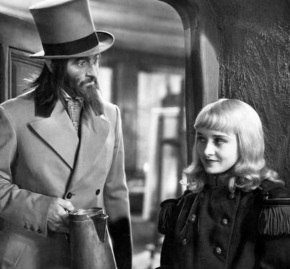
After his success with SVENGALI at Warner Brothers, he signed a multi-picture deal at MGM. This led to his casting opposite Greta Garbo in GRAND HOTEL (1932):
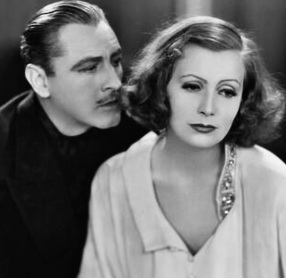
MGM also cast him alongside his real-life siblings Lionel and Ethel in RASPUTIN AND THE EMPRESS (1932):
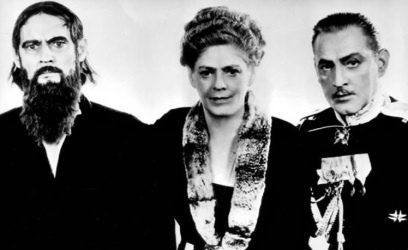
After his work at MGM, he moved over to RKO. He had an interesting role as Katharine Hepburn's troubled father in the original version of A BILL OF DIVORCEMENT (1932). The precode drama was directed by George Cukor, and it was Hepburn's screen debut.
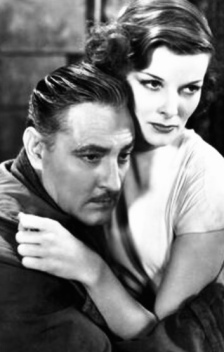
RKO also put him with Helen Twelvetrees in STATE'S ATTORNEY (1932) a legal melodrama in which he counseled Twelvetrees through her various predicaments.
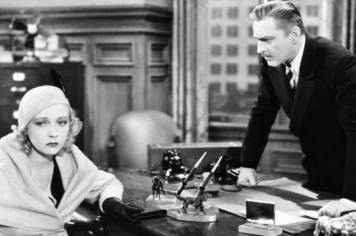
Next there was a plum assignment opposite Myrna Loy as a socialist teacher turned capitalist (who loses his integrity) in TOPAZE (1933).

A career highpoint occurred when he was loaned to Columbia for the screwball comedy TWENTIETH CENTURY (1934). It was the first of two collaborations with Carole Lombard, and they were both slated for a third film at the time of her death.
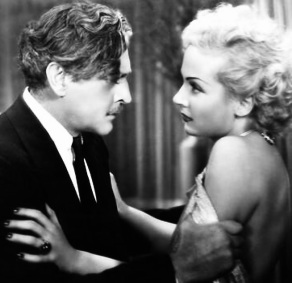
He went back to MGM to play Mercutio in the studio's extravagant version of ROMEO AND JULIET (1936). In this scene, he duels Basil Rathbone:
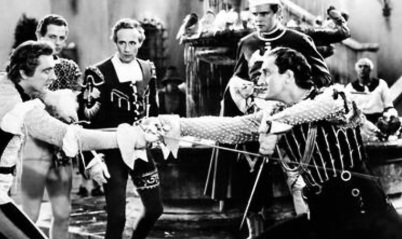
His increased drinking led to reduced screen time and his taking supporting roles. He signed a contract at Paramount in the late '30s and found work supporting John Howard in three Bulldog Drummond B pictures.

After his contract ended at Paramount, he freelanced. There was a starring role at RKO in THE GREAT MAN VOTES (1939)...but his erratic behavior (in which he allegedly threw Virginia Weidler across the room after he thought she was upstaging him) almost caused him to be pulled off the picture.
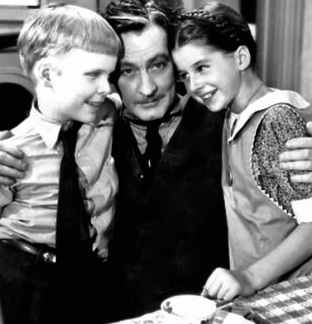
He then lapsed into self-parody, spoofing himself in THE GREAT PROFILE (1940) at Fox...as well as playing himself in RKO's PLAYMATES (1941). In fact, PLAYMATES would be his last screen role, where he had scenes teaching musician Kay Kyser how to perform Shakespeare:
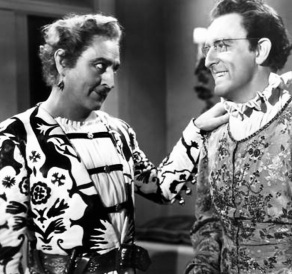
It wasn't the most glorious way to go out, was it?
|
|
|
|
Post by christine on Feb 10, 2024 17:59:50 GMT
My favorite film of his was MAYTIME with Nelson Eddy and Jeanette McDonald. Sad love triangle and the enchanting voices of Nelson and Jeanette. Barrymore was so intense in his love for Jeanette!
|
|
|
|
Post by topbilled on Feb 10, 2024 18:04:47 GMT
My favorite film of his was MAYTIME with Nelson Eddy and Jeanette McDonald. Sad love triangle and the enchanting voices of Nelson and Jeanette. Barrymore was so intense in his love for Jeanette!
To keep his movie career going, he had to continue taking supporting roles...or else he might occasionally get cast as the lead in a modestly budgeted programmer, such as THE GREAT MAN VOTES. Despite the increasingly erratic off-screen behavior that he exhibited, Barrymore was always an intriguing performer on camera.
PLAYMATES is particularly bad, and one can't help but think he was taking sips of booze between scenes, since he is quite disheveled looking at times...yet he still manages to be entertaining. |
|
|
|
Post by jinsinna13 on Feb 11, 2024 14:22:52 GMT
Bette Davis recommended John Barrymore for the role of Sheridan Whiteside in The Man Who Came to Dinner. Barrymore's alcoholism and inability to remember his lines caused him to be passed over. Monty Woolley, who played Sheridan Whiteside on Broadway, was cast instead.
|
|
|
|
Post by topbilled on Feb 11, 2024 15:05:35 GMT
Bette Davis recommended John Barrymore for the role of Sheridan Whiteside in The Man Who Came to Dinner. Barrymore's alcoholism and inability to remember his lines caused him to be passed over. Monty Woolley, who played Sheridan Whiteside on Broadway, was cast instead.
Paramount deactivated the project and ended up selling the story to Republic. Republic made it with Joseph Schildkraut and Ona Munson, who do a fine job. But every time I watch the final scene with Schildkraut and Munson celebrating Christmas, I think of Barrymore and Lombard and imagine them in the roles. |
|
|
|
Post by topbilled on Feb 11, 2024 15:46:18 GMT
Day 11. Dolores del Rio (in the beginning she was credited in Hollywood as Dolores Del Rio, with a second uppercase D, which was incorrect). She was discovered by an American director on a trip to Mexico, who brought her back to Hollywood with him. Here's an early publicity photo right after she arrived in Hollywood:
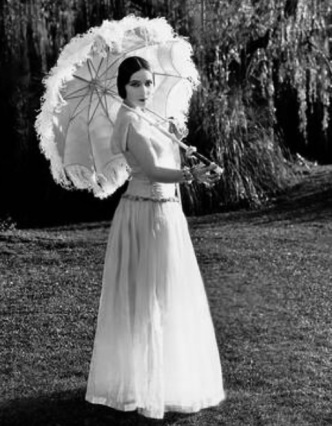
As was the practice at the time, her new representatives exaggerated her background to make her seem more alluring. They wanted her to be the Mexican Garbo, basically. She did catch on, but it took a few supporting roles, starting in 1925. Her first real success was in 1927 in an adaptation of Tolstoy's RESURRECTION with Rod LaRocque, playing a Russian peasant girl:
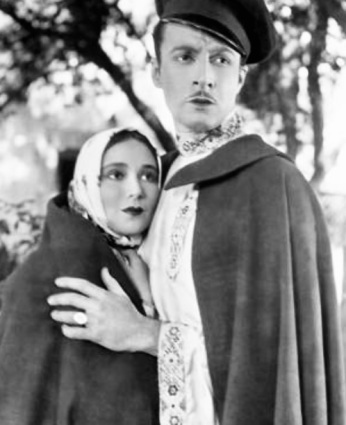
Another notable hit in 1927 was a big budget adaptation of THE LOVES OF CARMEN with Victor McLaglen. Raoul Walsh directed them:
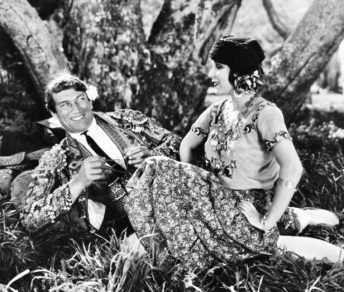
She followed this up with an adaptation of RAMONA opposite Warner Baxter:
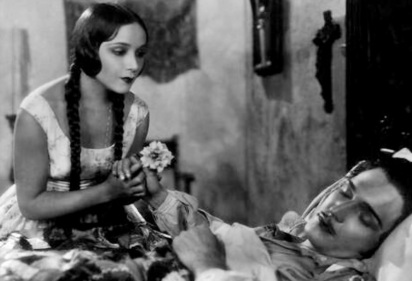
There were a few more silent film successes, before she transitioned to talkies. Her first sound film was in 1930, but then she was off screen for two years due to illness. When she returned to movies, she signed with David Selznick at RKO. Her first RKO production was GIRL OF THE RIO which paired her with Leo Carrillo, and it was a hit. Snagging these types of roles made her rival Lupe Velez quite jealous of her:
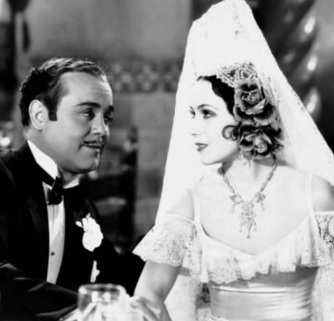
She had a big hit with BIRD OF PARADISE in 1932. Critics considered her the erotic ideal in precodes.
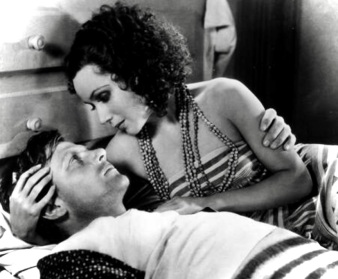
Her next RKO film was FLYING DOWN TO RIO with Gene Raymond. At this point, she caused a sensation by becoming the first actress to wear a two-piece bathing suit on screen.
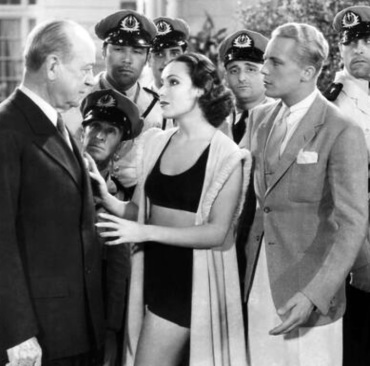
She moved over to Warner Brothers and was cast in WONDER BAR with Al Jolson and Kay Francis. Her scenes with Jolson were beefed up, which Francis resented.

Her next WB film is probably her signature role in Hollywood...as MADAME DU BARRY. It ran into censorship problems but the controversy only helped increase business at the box office.

She was cast alongside Pat O'Brien in the romantic musical comedy IN CALIENTE. Pat O'Brien is not an actor viewers associate with sex appeal, but Dolores brought something out in him that hadn't been seen before.
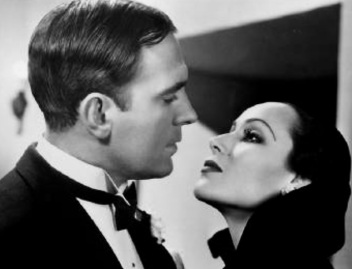
She finished her contract at Warners in THE WIDOW OF MONTE CARLO with Warren William:
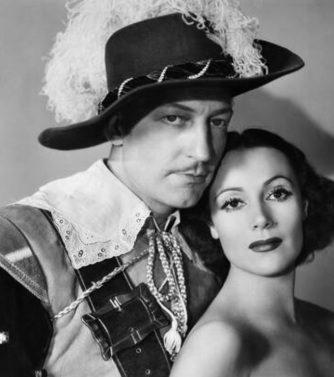
At this point she left Hollywood briefly, to make a mystery drama with Douglas Fairbanks in England called ACCUSED:
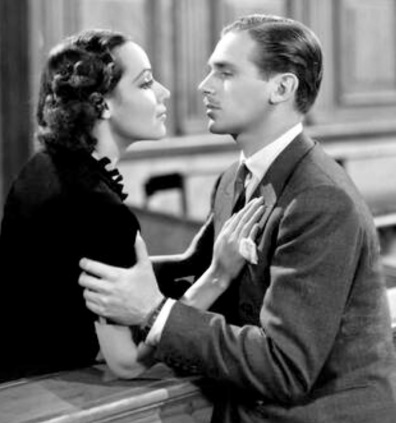
Her next costar was just as dapper and handsome-- George Sanders. She was linked with Sanders romantically off-screen. On screen they made two films together for 20th Century Fox. The best of these is LANCER SPY:
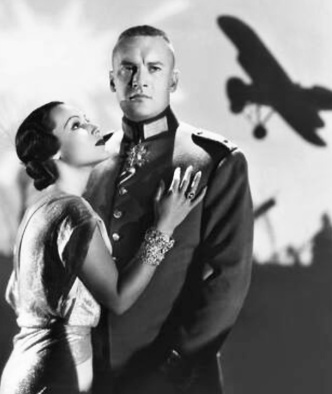
She was now freelancing and picked up a role at MGM in the Civil War drama THE MAN FROM DAKOTA in which she shared the screen with John Howard & Wallace Beery:
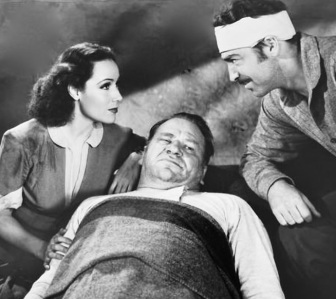
She then began a relationship with Orson Welles which led to her being cast with Joseph Cotten in RKO's JOURNEY INTO FEAR. This picture was a flop, and she decided to leave Hollywood and return to Mexico.
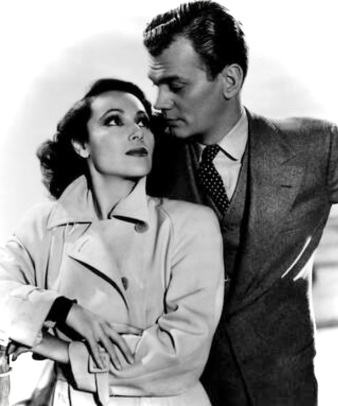
Dolores del Rio successfully reinvented herself in Mexican cinema, earning many accolades and new fans in films from the mid-1940s through the late 1950s. Her signature role in Mexican cinema was as an indigenous woman in MARIA CANDELARIA (1944). Many of her first Mexican films teamed her with Pedro Armendariz:
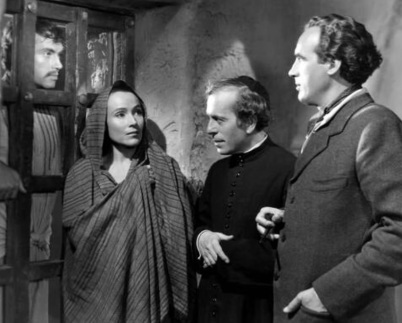
John Ford cast her in his independent drama THE FUGITIVE (1947). It was filmed in Mexico and released through RKO. Her leading man was Henry Fonda, who played a troubled priest:
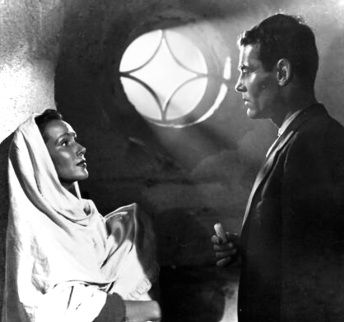
She continued to act in Mexican films and lived in Acapulco. However, her next husband was an American millionaire, so she would eventually leave Mexico again and go back to the U.S. Her return to the United States allowed her to play stage roles in New York, do a bit of television, and she ended up back on Hollywood screens in the early 1960s. One notable effort had her playing the native mother of Elvis Presley's character in FLAMING STAR:
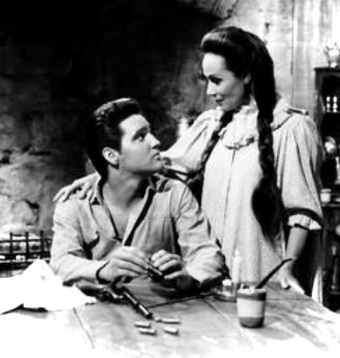
She also played Sal Mineo's native mother in CHEYENNE AUTUMN. This film reunited her behind the scenes with director John Ford:

As you read about her life and study her films, you realize that Dolores del Rio lived an incredibly active and unique life. She was one of the cinema's most beautiful women. After she became a well-known fixture of Mexican cinema, she went from being a movie star to becoming a serious actress. She is that rare lady who bridged the cultures of two neighboring countries.
|
|